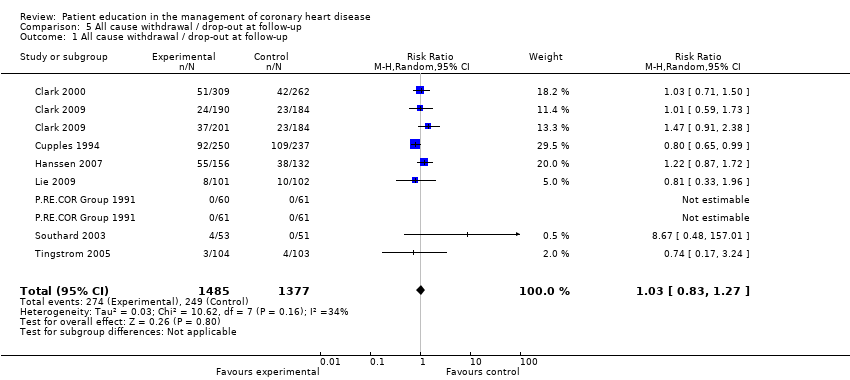Contenido relacionado
Revisiones y protocolos relacionados
Lindsey Anderson, James PR Brown, Alexander M Clark, Hasnain Dalal, Henriette Knold K Rossau, Charlene Bridges, Rod S Taylor | 28 junio 2017
Carolina Santiago de Araújo Pio, Gabriela SS Chaves, Philippa Davies, Rod S Taylor, Sherry L Grace | 1 febrero 2019
Linda Long, Lindsey Anderson, Alice M Dewhirst, Jingzhou He, Charlene Bridges, Manish Gandhi, Rod S Taylor | 2 febrero 2018
Lindsey Anderson, Rod S Taylor | 12 diciembre 2014
Andrea Takeda, Nicole Martin, Rod S Taylor, Stephanie JC Taylor | 8 enero 2019
Sheila A Fisher, Carolyn Doree, Anthony Mathur, David P Taggart, Enca Martin‐Rendon | 24 diciembre 2016
Sally C Inglis, Robyn A Clark, Riet Dierckx, David Prieto‐Merino, John GF Cleland | 31 octubre 2015
Shah Ebrahim, Fiona Taylor, Kirsten Ward, Andrew Beswick, Margaret Burke, George Davey Smith | 19 enero 2011
Johanna Hummel, Gerta Rücker, Brigitte Stiller | 2 agosto 2017
Suzanne H Richards, Lindsey Anderson, Caroline E Jenkinson, Ben Whalley, Karen Rees, Philippa Davies, Paul Bennett, Zulian Liu, Robert West, David R Thompson, Rod S Taylor | 28 abril 2017









